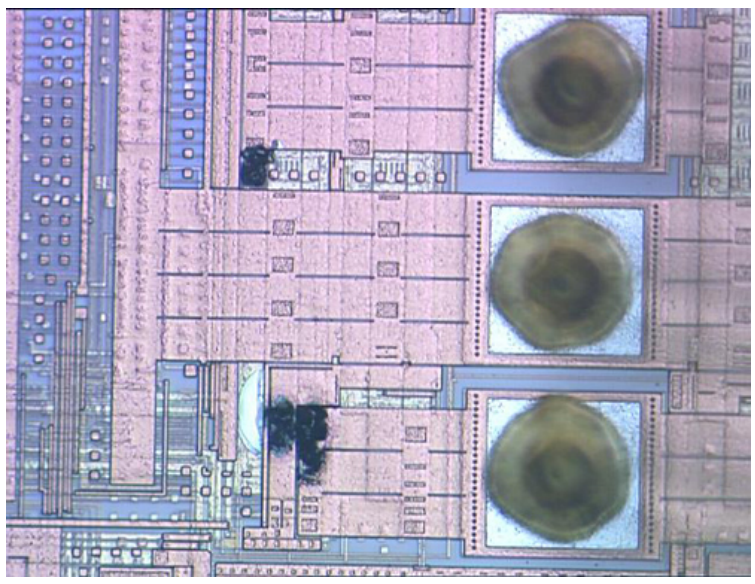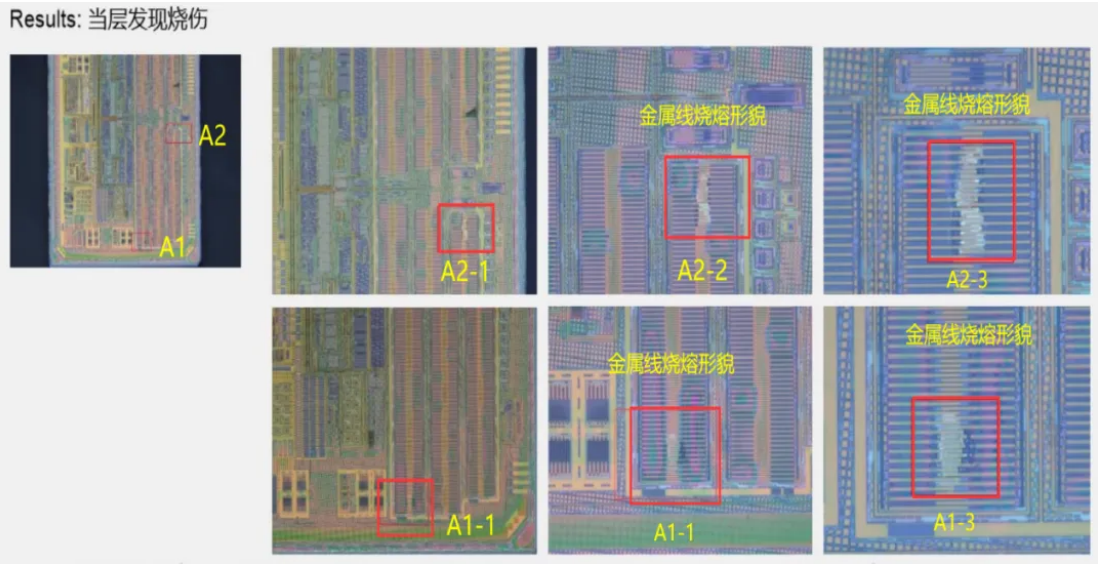EOS and ESD: Both arise from electricity, how to distinguish and prevent them? The case tells you
Date:2024-06-13 14:06:23 Views:7104
EOS and ESD are two types of electrical faults that are not uncommon, and their frequency is increasing with the increasing usage of chips. These two types of faults are caused by electricity and have some commonality, making them relatively easy to confuse. Today, Chuangxin Testing will take you to have a specific understanding of these two types of faults, and combine them with case studies to summarize preventive measures.
Clear concept of faults
EOS, also known as Electrical Over Stress, is characterized by the generation of a large amount of thermal energy due to overvoltage or overcurrent, which burns out the internal components. EOS can refer to all excessive electrical faults, including the ESD that will be introduced below.
ESD, also known as Electrical Static Discharge, specifically refers to the instantaneous burning of components caused by static electricity. We know that although static electricity has an extremely short duration, it can generate huge currents and voltages, which are enough to damage the internal structure of components. By definition, ESD is essentially still an electrical overstress fault, so it can be seen as a special case of EOS.
Fault characterization and causes
The core concept of EOS is electrical overstress, where exceeding the limit of current causes device damage, generally resulting in increased power, high-intensity heating, metal wire expansion, large-scale damage to the entire component, and even burning of plastic packaging.
The reasons that can cause EOS include transient current/peak/low-frequency interference caused by test program switching (hot switching), power supply (AC/DC) interference and overvoltage, test design exceeding the system's tolerance limit, pulses sent from other devices, grounding rebound, etc.
ESD specifically refers to over point damage caused by static electricity, with a much shorter duration, ranging from a few picoseconds to a few nanoseconds. The total energy released is limited, which often leads to transistor level damage, hidden deep within the internal structure of the component, and overall visibility is not strong. Identifying the fault point often requires more complex processes such as open cover testing.
The reason that can cause ESD is the possible generation of static electricity in the workflow, including human contact with materials, frictional electrification, induction electrification, etc. When static electricity accumulates to a certain extent, it can cause discharge and lead to failure.
Presentation of fault cases
Case 1: A certain product frequently experiences damage at the user's site. After analyzing the repaired boards, it was found that most of the repaired boards were due to the failure of certain interface components. After dissecting the device and observing it under a metallographic microscope, it was found that the internal aluminum wire melted due to EOS, which had a high energy level.

Metallographic microscope image: visible obvious burn damage
Further analysis of the application of the pin circuit connected to the aluminum strip revealed that the circuit design was improperly applied and no protective circuit was used. The surge generated by live plugging and unplugging at the user's site resulted in the failure of the device. The failure can be reproduced through simulation testing, and the judgment can be verified.
The solution for this case is to emphasize in the user manual that the product does not support live plugging. A longer-term preventive measure is to consider user usage habits in future designs, add protective circuits, and design products that are hot swappable.
Case 2: After the customer put one driver chip on the machine, there was a poor output situation. Only this one in the entire batch failed, and there were no abnormalities in the circuit design, welding, and other aspects. Therefore, the cause of the failure can be locked onto the component itself.
Through electrical characteristic testing, it was confirmed that there was a short circuit problem. After opening the sample and removing the layer, it was found that the internal M1 layer had a melted metal wire morphology, and it was confirmed that ESD caused this damage, which led to a short circuit in the overall output of the chip.

The melting point is visible on the M1 layer of the chip wafer, while other parts of the chip have no visible abnormalities in appearance
For this case, what can be done is to optimize the circuit protection mechanism and pay attention to anti-static measures. Under special conditions, reference can be made to the ESD prevention and control indicators of the device for testing, further ensuring that the entire product has complete anti-interference ability.
Overall fault prevention
Measures for improvement and prevention have been provided for specific cases. To prevent two types of faults caused by electricity from the root cause, each has its own emphasis.
For EOS, the quality and reliability requirements of the product should be clearly defined during the development phase. Different types of products, such as telecom grade and consumer grade, have different requirements for reliability, including detailed measurement of usage scenarios, customer needs, and repair rate indicators to determine the extreme values of voltage and current that the system can withstand. In specific scenarios, if customers have a habit of hot swapping, corresponding EOS protection circuits should be designed to prevent overload damage caused by surges.
For ESD, protection circuits should be set up based on actual conditions at the circuit design level. In terms of production, it is necessary to eliminate static electricity sources in the SMT SMT process, such as using insulated gloves, anti-static trays, etc.
In practice, it is difficult to identify the specific cause of many component burnout faults. In this case, professional testing institutions need to identify the specific cause from the aspects of fault morphology, circuit design, operation process, etc., and clarify whether it is caused by EOS or ESD. We will provide different improvement suggestions for different types of failures. If you have any needs for failure identification, please call the Chuangxin Testing National Hotline at 4008-655-800.




 Weixin Service
Weixin Service

 DouYin
DouYin
 KuaiShou
KuaiShou





















